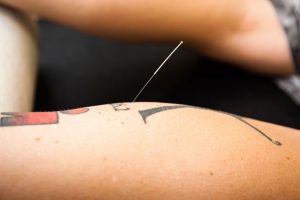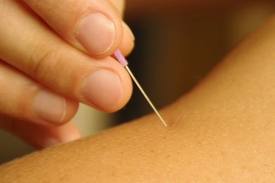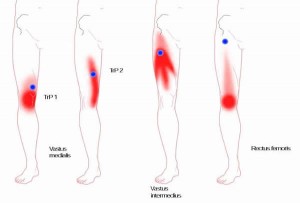Looking for a path to faster healing, pain relief, and enhanced athletic performance in Gilbert, AZ?
Fast, effective, cutting-edge techniques for pain and injuries
Plantar Fasciitis – Hamstring Injuries – Throwing injuries – Shoulder Pain – Tennis Elbow – Back and Neck Pain
No long-term treatment plans. No uninterested or inattentive technicians. Just you, one-on-one with Dr. Jeff Banas.
Call or text now to schedule your dry-needling session with Dr. Jeff Banas
480-201-5694
Dry Needling in Mesa Arizona, Pain, Sports Injuries, Trigger Point and Muscle Spasms
- Joint issues.
- Disk issues.
- Tendonitis.
- Migraine and tension-type headaches.
- Jaw and mouth problems, such as temporomandibular joint (TMJ) disorders.
- Whiplash.
- Repetitive motion disorders, such as carpal tunnel syndrome.
- Spinal issues.
Call or text Dr. Jeff Banas directly to schedule your dry needling session in Gilbert, AZ 480-201-5694
$60 per session
(NaturalNews) Myofascial trigger points (MTrPs) are defined as “hyperirritable spots in skeletal muscle that are associated with a hypersensitive palpable nodule in a taut band.” Trigger point dry needling (TrP-DN), also referred to as intramuscular stimulation, is an invasive procedure using an acupuncture needle to deactivate and desensitize these trigger points. In contrast to the ancient practice of acupuncture, which concentrates on correcting imbalances in the flow of GI through channels known as meridians, TrP-DN is relatively new; having been an effective modality for just 70 years.
Brief history of dry needling:
The term “dry needling” is believed to have been coined by Janet G. Travell, MD (1901-1997) in the early 1940s. Travell was a pioneer in treating myofascial pain using trigger point therapy. She discovered that the use of hypodermic needles was effective due to their strength and tactile feedback and opposed using acupuncture needles as she believed them to be too thin and flexible to properly treat a trigger point. Initially, she injected a local anesthetic into the trigger point which is a reason she used a syringe for trigger point therapy. Later, though, she found that her patients responded well to the insertion of the needle alone to break up trigger points without injecting any solution. Thus, “dry needling” took root as a solution-free modality in treating myofascial pain. In 1979, Karel Lewit performed a study confirming the efficacy in dry needling by showing the analgesic effects of needle insertion into the body. As researched progressed, TrP-DN practitioners began adopting acupuncture needles in lieu of hypodermic needles as they are less invasive.
How dry needling works and who can benefit from it:
Because acupuncture needles are very fine and solid, they don’t hurt as they pass through the skin like a hollow injection needle does. The sensations people report are “deep aching,” “pressure,” “releasing,” “blood flow,” or “soreness.” The needle is left in for a very short period of time, just long enough to relax the muscle. The procedure is repeated in different areas until the muscle returns to its normal, relaxed state.
When a needle tip hits a trigger point, a characteristic, involuntary ‘local twitch’ in the muscle is observed. It has been suggested that the elicitation of local twitch responses is the most important aspect in obtaining a successful therapeutic outcome for trigger point deactivation. Still unproven, it is suspected that by stimulating the mechanoreceptors in trigger points, TrP-DN can disrupt the neurological feedback loop eliciting pain to the central nervous system. Thus, decreasing pain.
neurological feedback loop eliciting pain to the central nervous system. Thus, decreasing pain.
Still not quite well known, many people have received great results from TrP-DN. People, for example, who receive significant yet transient relief in massage therapy have found TrP-DN to provide longer lasting relief. Trigger point works best for people with overuse injuries, chronic pain, and sports injuries. Some purported benefits include:
• Give you lasting pain relief from head to toe
• Eliminate tension, wherever you hold it
• Heal overuse injuries
• Get rid of knots in muscles
• Help muscles heal after injury
• Release tight muscles
• Speed healing time
• Improve blood flow at a deep level
• Stimulate a muscle to work better
• Prevent injuries in the first place
• Get people back exercising ASAP
• Heal chronic injuries of muscles, tendons and joints
DRY NEEDLING: FREQUENTLY ASKED QUESTIONS
What is Dry Needling?
Dry needling is an invasive procedure whereby solid filament (acupuncture) needles are inserted into the skin and muscle directly at a myofascial trigger point.
A myofascial trigger point (sometimes known as a knot) consists of multiple contraction knots, which are related to the production and maintenance of the pain cycle.
The approach is based on Western anatomical and neurophysiological principles which are not to be confused with the Traditional Chinese Medicine (TCM) technique of acupuncture (Travell & Simons 1999).
What can Dry Needling help?
Dry needling can be used for a variety of musculoskeletal problems. Muscles are thought to be a
primary contributing factor to the symptoms. Conditions which respond to dry needling include,
but are not limited to:
• Headaches
• Frozen Shoulder
• Tennis elbow
• Carpal tunnel syndrome
• Golfer’s elbow
• Buttock pain
• Leg pain
• Hamstring strains
• Shin splints
• Muscle Spasms
• Fibromyalgia
• Sciatic Pain
• Hip Pain
• Knee Pain
• Repetitive Strain Injuries
How does Dry needling work?
The exact mechanism is not known but there are mechanical and biomechanical effects. The
pioneering studies by Dr Shah and colleagues at the National Institutes of Health (USA) suggest that inserting a needle into trigger points can cause favourable biochemical changes which assist in reducing pain. It is essential to elicit a Local Twitch Response which is a spinal cord reflex and is the first step in breaking the pain cycle.
1. Something causes pain, if it happens often enough or if the trauma is great enough, the pain signal may return through the Sympathetic Ganglion and activate Primary Afferent Nociceptors (H) which will feedback to the spinal cord. This will cause pain to continue instead of fade and is called a Reflex Arc.
2. At the same time motor neurones may become stuck in a feedback loop/reflex arc,
facilitating muscle spasm. In some cases the reflex arc continues for years, even decades.
3. Introducing a new stimulus (i.e. the needle) impedes the reflex arc and has the effect of relaxing the muscle.
How does Dry Needling stop this cycle?
A spasmed muscle becomes a damaged muscle. Spasm reduces blood flow in the muscle. This
means less oxygen and nutrients to the muscle. Muscle fibres die off and get replaced by fibrous
scar tissue. This in turn holds the muscle tight, prevents muscle metabolites from leaving the muscle and causes continued spasm and pain.
Putting a needle into a spasmed muscle causes the muscle to relax, this can be seen with an electromyogram (EMG).
What does Dry Needling feel like?
Generally, needle insertion is not felt, the local twitch response may provoke a very brief pain response. This has been described as an electric shock or a cramping sensation. During treatment, patients commonly experience heaviness in the limbs or a pleasant feeling or relaxation.
The benefits of Dry needling frequently include more than just relief from a particular condition.
Many people find that it can also lead to increased energy levels, better appetite and sleep as well as an enhanced sense of overall well being.
What should I do after Dry Needling?
Stretch the treated muscle as much as possible, 20 seconds by 4 at a time.
Are the needles sterile ?
Yes, only sterile disposable needles are used.
Are there any side effects?
Most patients report soreness in the treated area and referral zone lasting from a few hours to
two days.
Side effects are very rare but when they occur, the most frequent and the most serious is that of a
pneumothorax. This is where a needle pierces the lung leading to a full or partial collapse. This
happens mostly when a needle is inserted into the Trapezius muscle in a certain way and too
deeply.
How long does it take for the procedure to work?
Typically, it takes several visits for a positive reaction to take place. We are trying to cause
mechanical and biochemical changes without any medication. Therefore, we are looking for a
cumulative response to achieve a certain threshold after which the pain cycle is disturbed.
What if my family doctor is not familiar with Dry needling?
Dry needling is a relatively new method of treating myofascial pain and not everyone is already
aware of this effective modality. Feel free to inform your GP about this treatment option and the
Clinic can be contacted for further queries.
Where does Dry Needling fit in the entire rehabilitation program?
More frequently, dry needling is needed at the beginning to help break the pain cycle then other
treatment modalities are introduced.
Once I am feeling better, how often do I need to come back to maintain my progress?
The musculoskeletal system is under constant pressure from gravity, stress, work etc. A regular
exercise program combined with good posture can prevent many problems. If the pain returns,
“tune-ups” are recommended to treat and prevent injuries.
